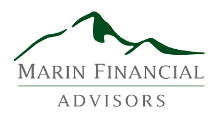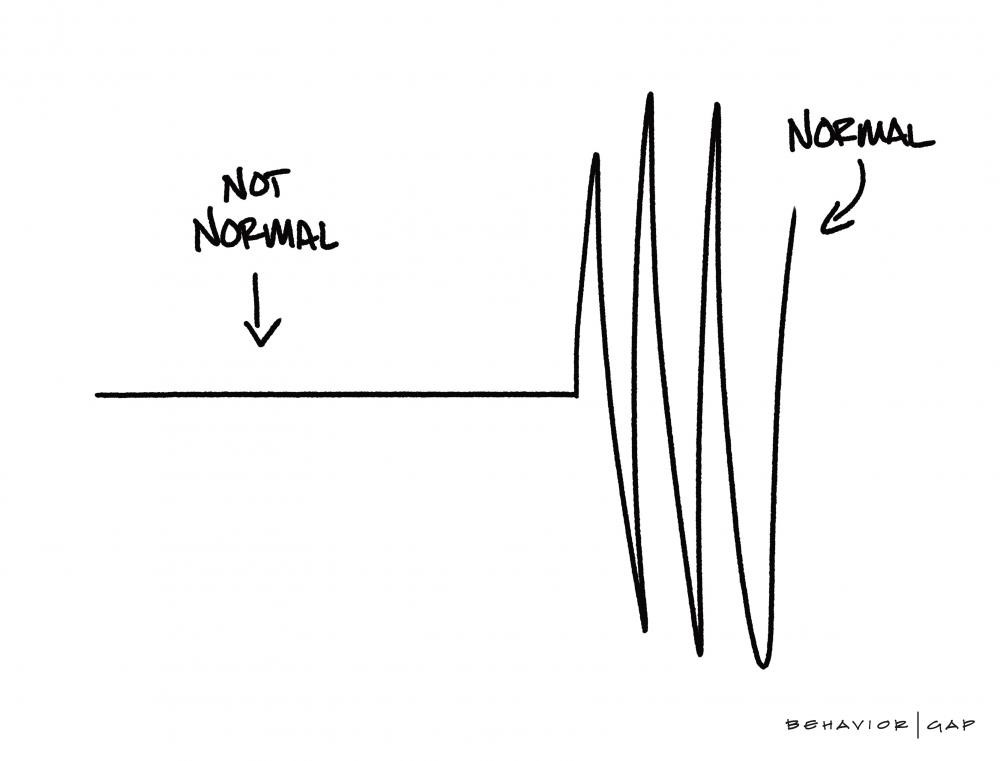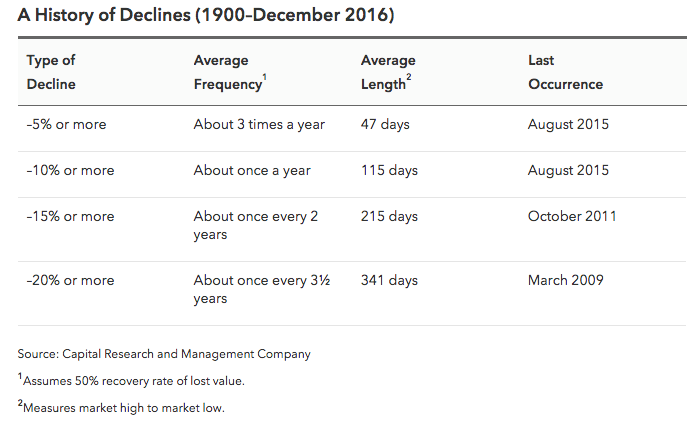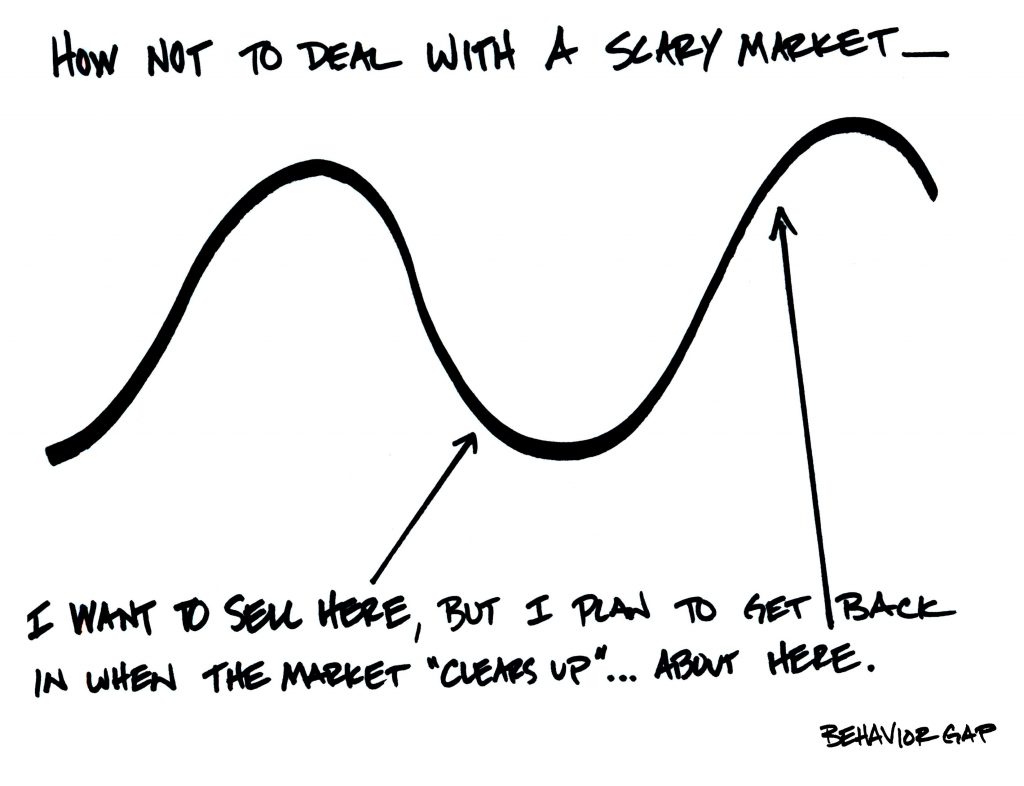After an unusually long run of particularly calm and rewarding markets, volatility is back.
Looking back, 2017 offered an especially mellow ride for investors. The largest daily drop in the S&P 500 in 2017 was -1.82%. The largest daily gain was 1.37%. And the index ended the year up 18.7%.
2018 began in the same vein as January produced 10 record highs in 13 days. All this calm and all of these positive returns may have lulled investors into feeling that this was normal (“Hey, we could get used to this!”)
Then, with more drama than an Olympic downhill run, volatility returned in the last week of January with single day market drops of -2%, -3.75% and even -4.1%. At one point, the market was down 10% from its late January high. The “up” week in mid-February was the best one week gain for the S&P 500 in five years.
Suddenly, this volatility feels abnormal. But, as reinforced in the sketch below, the opposite is true: Volatility is normal and expected.
As the chart below shows, we expect market drops of over 5% a few times a year. It’s normal to see drops of over 10% about once a year. Drops of 20% have happened roughly every 3.5 years.
In every case, so far, the market recovered. Remaining invested during volatile times has historically led to very attractive subsequent returns. Here’s a look at the average annualized market return 1, 3 and 5 years after a drop of 10% or 20%.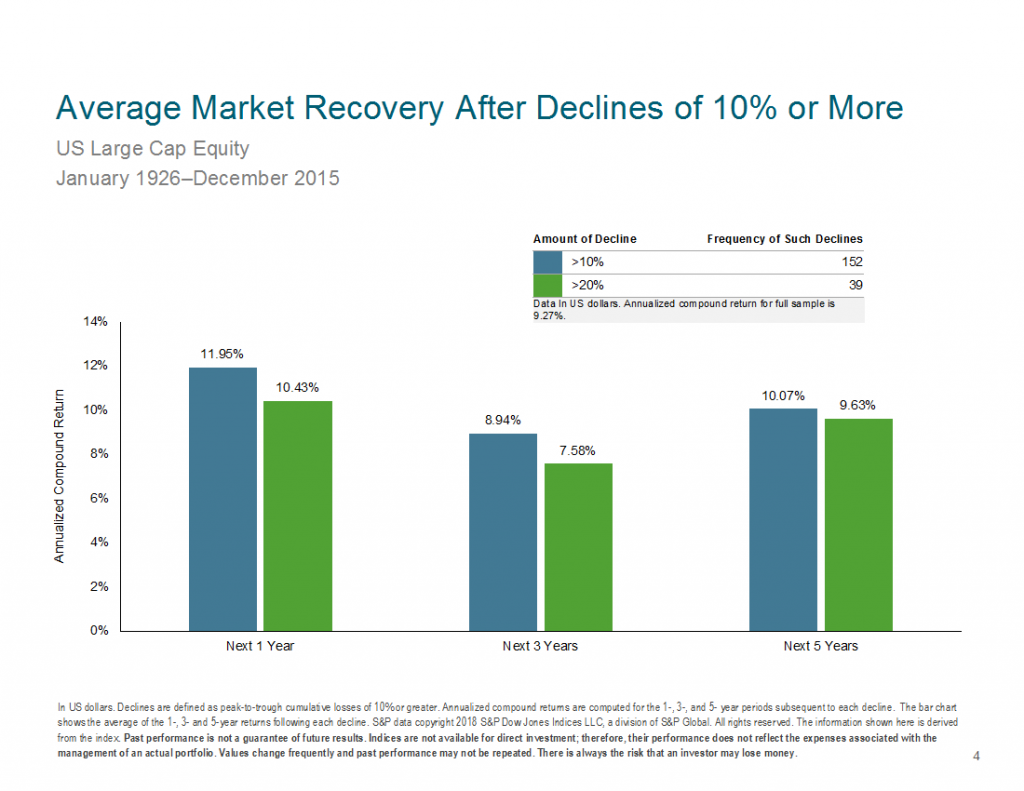
For example, since 1926, on average, 5 years after a drop of 10% the market has returned a return of 10% per year. After a drop of 20%, the market’s average annual return has been 9.6% per year.
What does that tell us? That reacting to market drops in order to avoid further losses isn’t necessary or recommended. That reaction is too often damaging and looks like this:
(i.e. Sell low when markets are down, buy high after they have recovered and “feel” better.)
We fully understand that volatility can be uncomfortable. We’re reminding you that it’s also normal. In its simplest form, investing is an implicit agreement to withstand discomfort long enough to enjoy reward. We know with certainty that discomfort (volatility) will visit us and that we can’t know when that will be. And, we are overwhelmed with evidence that sticking to a disciplined investing strategy through these times proves very rewarding.
The best thing to do when volatility appears is to casually exclaim “Ah – there you are!” and then patiently wait for it to go away.
We feel confident that the economic and market fundamentals continue to look very positive and that rewards will continue to be delivered to patient investors.
As always, we are happy to review things with you. Please reach out any time.
